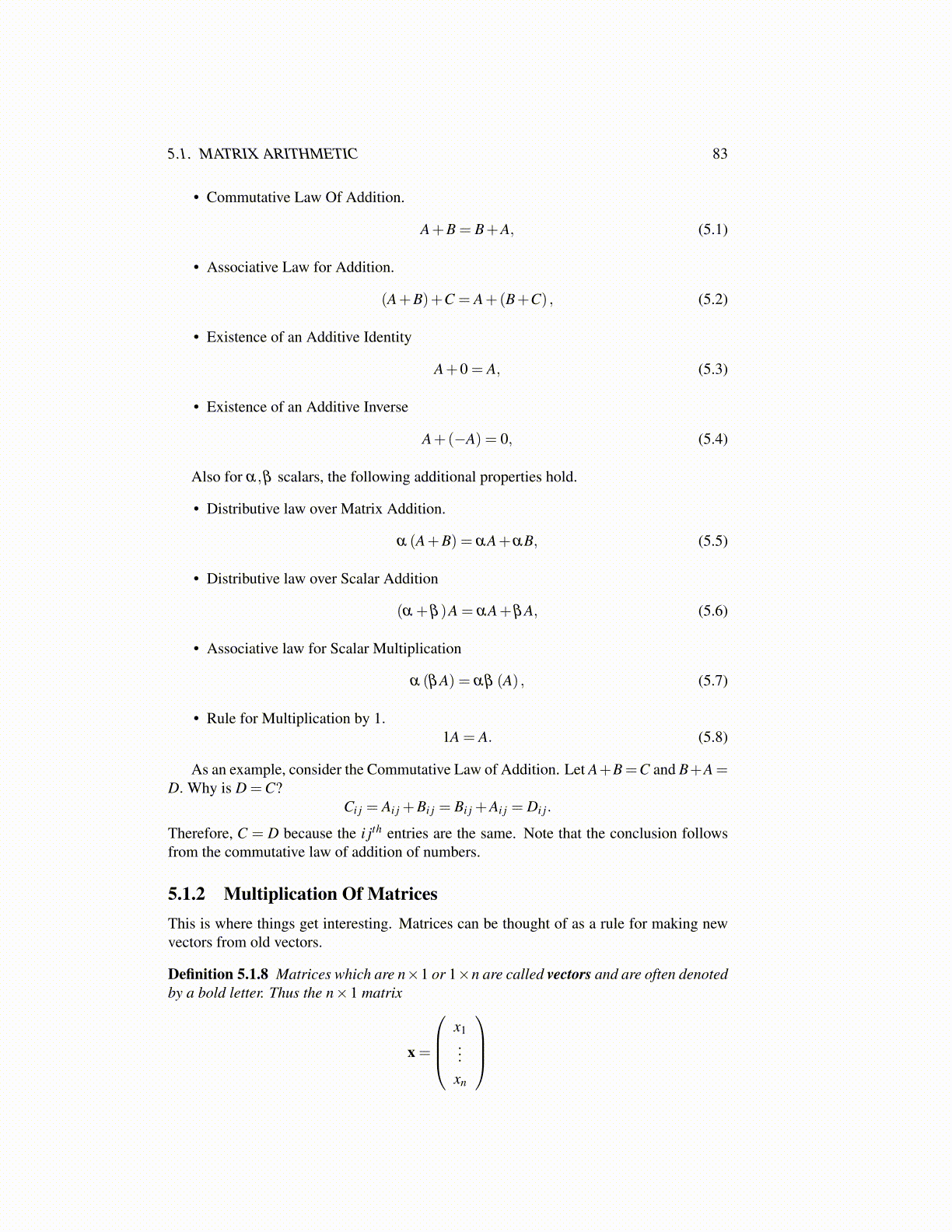
5.1. MATRIX ARITHMETIC 83
• Commutative Law Of Addition.
A+B = B+A, (5.1)
• Associative Law for Addition.
(A+B)+C = A+(B+C) , (5.2)
• Existence of an Additive Identity
A+0 = A, (5.3)
• Existence of an Additive Inverse
A+(−A) = 0, (5.4)
Also for α,β scalars, the following additional properties hold.
• Distributive law over Matrix Addition.
α (A+B) = αA+αB, (5.5)
• Distributive law over Scalar Addition
(α +β )A = αA+βA, (5.6)
• Associative law for Scalar Multiplication
α (βA) = αβ (A) , (5.7)
• Rule for Multiplication by 1.1A = A. (5.8)
As an example, consider the Commutative Law of Addition. Let A+B=C and B+A=D. Why is D =C?
Ci j = Ai j +Bi j = Bi j +Ai j = Di j.
Therefore, C = D because the i jth entries are the same. Note that the conclusion followsfrom the commutative law of addition of numbers.
5.1.2 Multiplication Of MatricesThis is where things get interesting. Matrices can be thought of as a rule for making newvectors from old vectors.
Definition 5.1.8 Matrices which are n×1 or 1×n are called vectors and are often denotedby a bold letter. Thus the n×1 matrix
x =
x1...
xn